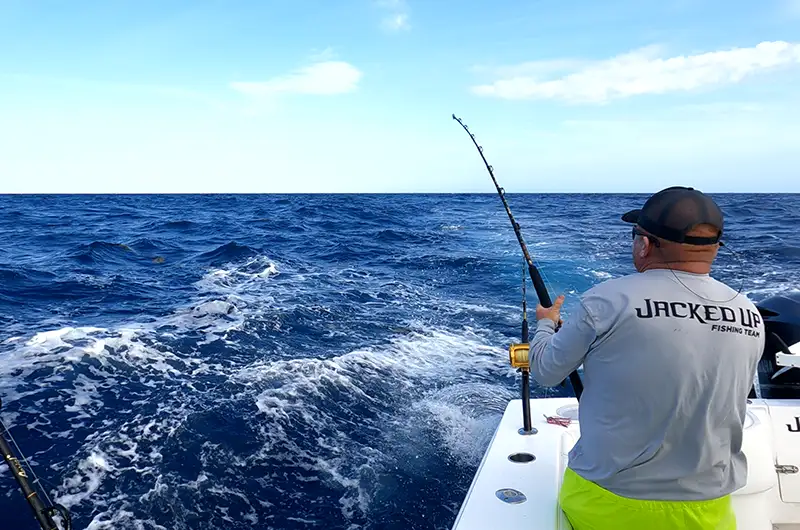
“Bait and switch;” sounds like a used car sales routine and, essentially, it is. In this instance, however, it’s a slick move with a good reputation. Experienced captains use the technique to help novice saltwater fly-fishermen gain confidence in their fly casting, retrieves, and hook-setting abilities.
The basic premise is really simple.
“The goal is to excite seriously large surface-feeding predators with a large popper in the hopes of getting them to gobble a surface popper or streamer fly,” explains Catalano. “The key is to remove the hooks from the surface plug. That way, even if a monster fish crushes the lure, you can still pull it away. If that happens two or three times, the fish can become seemingly crazed with rage.”
As one angler continues to retrieve the hookless popper on a spinning rod, the second angler casts the fly as the chase comes into range. Frustrated with being unable to hold onto the lure, big fish lash out at the fly.
To be sure, this technique is a really basic trick – but it is amazingly successful at connecting youngsters and novice fly-rodders with some real tackle busters. While most popular with fly-casters, the procedure can also be employed with spinning gear by throwing a hookless popper and then following it up with a large soft-plastic jerk bait along the lines of a 10-inch Hogy lure.
The old bait and switch; give it a try next time you have a novice angler aboard who needs a confidence boost. You’ll be amazed at the results!
MEMBER BENEFITS BEYOND 24/7 TOWING
As the premier leader in on-water boating assistance, Sea Tow members receive the most comprehensive benefits available. Membership includes a full suite of on-water assistance services for every boat you own, rent lease or bareboat charter. Learn more about our membership options today. To find the Sea Tow closest to you, use our service locator or call our Customer Care Team at 800-4-SEATOW.

